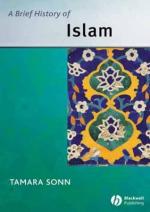|
This section contains 1,145 words (approx. 4 pages at 300 words per page) |

|
Courtly and Popular Literature. While the classical Arabic literature was largely produced by a class of religious scholars for themselves and only secondarily for the class of political rulers and their employees, classical Persian literature seems to have been directed mainly at a secular elite. This difference can be explained by the fact that religious scholars were conversant with the Arabic language because—except for mystical Sufi works—Muslim religious writings were exclusively in Arabic regardless of an author's mother tongue. (Indeed, until the twentieth century nearly all Muslim religious writing continued to be written in Arabic.) Princes, although they were often tutored in Arabic and religious subjects, frequently did not feel as comfortable with the Arabic language and preferred literature in Persian, which was either their mother tongue—as in the case of dynasties such as the Saffarids (861-...
|
This section contains 1,145 words (approx. 4 pages at 300 words per page) |

|




